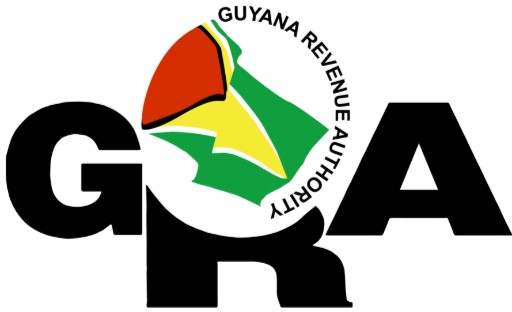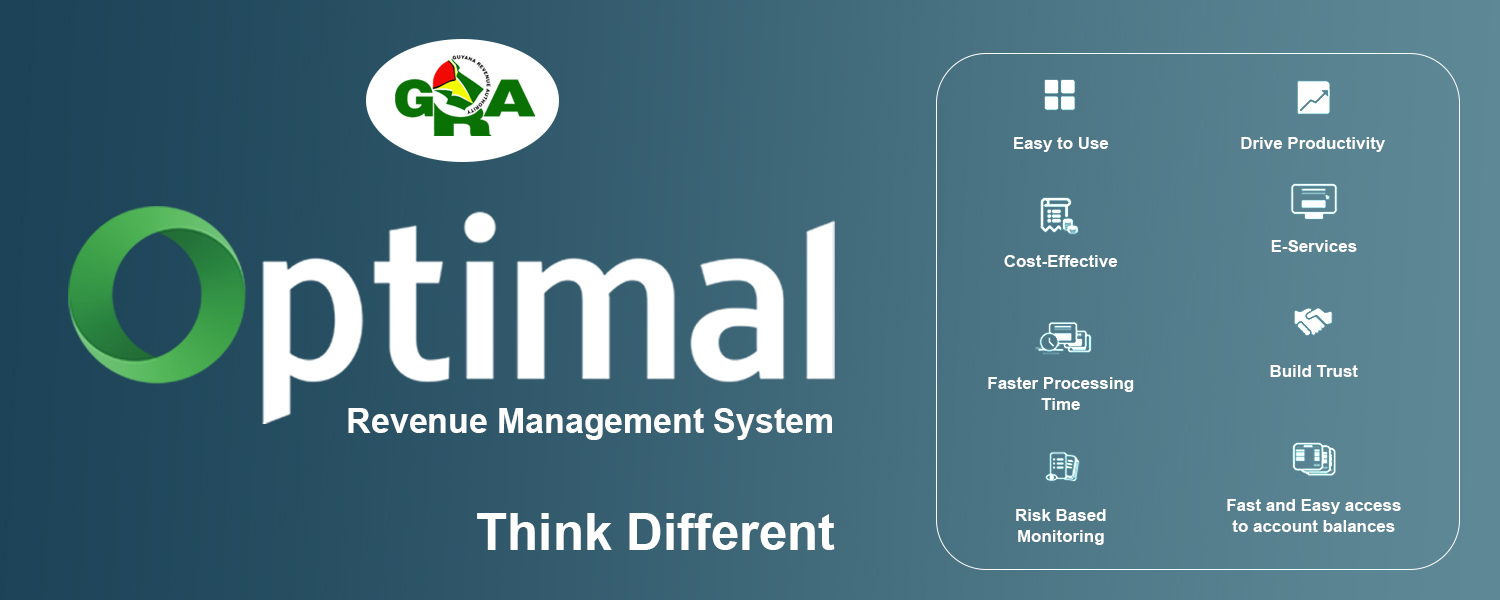Effective January 1, 2024, the Income Tax (Amendment) Act No. 2 of 2024 has brought changes to the personal allowance and deductions for employed and self-employed individuals. Here are the key updates:
1. ANNUAL STATUTORY DEDUCTION:
The amendment to Section 20 of the Income Tax Act, Chapter 81:01 sets the annual statutory deduction at one million, two hundred thousand dollars ($1,200,000).
2. CHARGEABLE INCOME:
Chargeable income, taxable at a rate of twenty-eight percent (28%), is limited to two million, four hundred thousand dollars ($2,400,000) annually. Any chargeable income exceeding this amount will be taxed at a rate of forty percent (40%), as per Sections 8, 16(1), 20, 36, 36A, and 60(1)(a) of the Income Tax Act, Chapter 81:01.
3. MEDICAL AND LIFE INSURANCE PREMIUM DEDUCTIONS:
Section 16(l) of the Income Tax Act, Chapter 81:01, introduced in 2022, allows for the deduction of medical and life insurance premiums from individual income. The deduction is subject to premiums paid, ten percent (10%) of the individual’s gross income or three hundred and sixty thousand dollars ($360,000) annually whichever is less. However, effective January 1, 2024, the ceiling increased to six hundred thousand dollars ($600,000) annually.
4. a. For Employed Individuals Earning Up To Three Hundred Thousand:
- Monthly Personal Allowance (Free Pay) for those earning up to three hundred thousand dollars ($300,000): one hundred thousand dollars ($100,000).
- National Insurance Scheme (NIS) Contribution: 5.6% of gross salary.
- Medical and Life Insurance Premium Deductions: Applicable on the amount of premiums paid by the employee, ten percent (10%) of gross salary or fifty thousand dollars ($50,000) monthly, whichever is less.
b. For Employed Individuals Earning Above Three Hundred Thousand Dollars ($300,000):
- Monthly Personal Allowance (Free Pay): one-third (1/3) of their gross income.
- National Insurance Scheme (NIS) Contribution: 5.6% of gross salary.
- Medical and Life Insurance Premium Deductions: Applicable on the amount of premiums paid by the employee, ten percent (10%) of gross salary or fifty thousand dollars ($50,000) monthly, whichever is less.
c. National Insurance Scheme Contribution Ceiling:
- The ceiling for the National Insurance Scheme Contribution is based on gross income up to two hundred and eighty thousand dollars ($280,000) per month or three million, three hundred and sixty thousand dollars ($3,360,000) annually.
- The employee’s contribution is 5.6% of their salary.
d. Deduction For Employed Persons:
- All employed persons are allowed a deduction of fifteen thousand, six hundred and eighty dollars ($15,680) monthly or one hundred and eighty-eight thousand, one hundred and sixty dollars ($188,160) annually when calculating chargeable income.
5. FOR SELF-EMPLOYED INDIVIDUALS:
- Self-employed individuals with a net income (after expenses and allowances) of three million, six hundred thousand dollars ($3,600,000) and below are allowed a personal allowance (free pay) of one million, two hundred thousand dollars ($1,200,000) annually.
- Medical and Life Insurance Premium Deductions: Applicable on the amount of premiums paid for medical and life insurance, ten percent (10%) of gross income or six hundred thousand dollars ($600,000) annually, whichever is less.
b. For Self-Employed Individuals With A Net Income (After Expenses And Allowances) Of Three Million, Six Hundred Thousand Dollars ($3,600,000) And Above:
- Personal Allowance (Free Pay): one-third (1/3) of net profit.
- Medical and Life Insurance Premium Deductions: Applicable on the amount of premiums paid for medical and life insurance, ten percent (10%) of gross salary or six hundred thousand dollars ($600,000) annually, whichever is less.
Based on the above the Threshold, Deductions for PAYE and Self-Employed Individuals Tax Computations and additional guidelines are provided hereunder.
The General Threshold and Deductions for all Individuals are as follows:
| PARTICULARS |
DAILY |
WEEKLY |
FORTNIGHTLY |
MONTHLY |
YEARLY |
|---|---|---|---|---|---|
| Personal Allowance (Free Pay) | $3,288 | $23,077 | $46,154 | $100,000 | $1,200,000 |
| National Insurance Scheme (up to $280,000) | 5.6% of Gross Salary | 5.6% of Gross Salary | 5.6% of Gross Salary | 5.6% of Gross Salary | 5.6% of Gross Salary |
| Medical and Life Insurance Premium Deduction (on the amount of premium paid by individuals for medical and life insurance premiums, limited to ten percent (10%) of Gross Salary; or $600,000 annually whichever is less) | |||||
| Rate of Tax of 28% on Chargeable Income of $2,400,000 | 28% | 28% | 28% | 28% | 28% |
| Rate of Tax of 40% on Balance of Chargeable Income in Excess of $2,400,000 | Balance @40% | Balance @40% | Balance @40% | Balance @40% | Balance @40% |
| Salary | Net: Profit | Income Base per period | $9,863 | $69,231 | $138,462 | $300,000 | $3,600,000 |
2. The Threshold and Deductions for Employed Individuals are as follows:
PAYE INDIVIDUALS Weekly Income Tax Computation without Medical & Life Insurance Premium Deductions
| (A) Weekly Gross Salary (Inclusive of All Taxable Allowances) $ |
Personal Allowance |
N.I.S Deduction |
(B) |
(C) Chargeable Income (CI) |
( D) |
( E) $ |
Total Tax Payable |
|---|---|---|---|---|---|---|---|
| 35,000 | 23,077 | 1,960 | 25,037 | 9,963 | 2,790 | – | 2,790 |
| Calculation |
(35,000*0.056) |
(9,963*.28) |
|||||
| 75,000 | 25,000 | 3,618 | 28,618 | 116,382 | 12,923 | 91 | 13,014 |
| Calculation |
(A*1/3) |
(64,615*0.056) |
(46,154*.28) |
(228*.40) |
(D+E) |
||
| 180,000 | 60,000 | 3,618 | 63,618 | 116,382 | 12,293 | 28,091 | 41,040 |
(A*1/3) |
(64,615*.056) |
(46,154*.40)=12,923 |
(116,382-46,154)=70,228(70,228*.40) |
(D+E) |
PAYE INDIVIDUALS Fortnightly Income Tax Computation
| (A) Fortnightly Gross Salary (Inclusive of All Taxable Allowances) $ |
Personal Allowance |
N.I.S Deduction |
(B) |
(C) Chargeable Income (CI) |
( D) |
( E) $ |
Total Tax Payable |
|---|---|---|---|---|---|---|---|
| 100,000 | 46,154 | 5,600 | 51,754 | 48,246 | 13,509 | 13,509 | |
| Calculation |
(48,246*.28) |
||||||
| 165,000 | 55,000 | 9,240 | 64,240 | 100,760 | 25,846 | 3,381 | 29,227 |
| Calculation |
(A*1/3) |
(92,308*.28) |
(8,452*.40) |
(D+E) |
PAYE INDIVIDUALS: Monthly Income Tax Computation on Income $300,000 and Under with Medical and Life Insurance Premium Deduction
| (A ) Monthly Gross Salary (Inclusive of All Taxable Allowances) $ |
Personal Allowance |
N.I.S Deduction |
Medical and Life Insurance Premium Paid Monthly |
Medical and Life Insurance Premium Deduction Allowed |
(B) |
(C) Chargeable Income (CI) |
(D) |
Total Tax Payable |
|---|---|---|---|---|---|---|---|---|
| 180,000 | 100,000 | 10,080 | 9,850 | 9,850 | 119,930 | 60,070 | 16,820 | 16,820 |
| Calculation |
(up to 10% of Gross Salary $18,000/$50,000 whichever is less) |
(up to 10% of Gross Salary $18,000/$50,000 whichever is less) |
(60,070*.28=16,820) |
|||||
| 290,000 | 100,000 | 15,680 | 40,000 | 29,000 | 144,680 | 145,320 | 40,690 | 40,690 |
| Calculation |
(up to 10% of Gross Salary $29,000/$50,000 whichever is less) |
(up to 10% of Gross Salary $29,000/$50,000 whichever is less) |
(145,320*.28=40,690) |
PAYE INDIVIDUALS Monthly Income Tax Computation on Income $300,001 and above
| (A ) Monthly Gross Salary (Inclusive of All Taxable Allowances) $ |
Personal Allowance |
N.I.S Deduction |
Medical and Life Insurance Premium Paid Monthly |
Medical and Life Insurance Premium Deduction Allowed |
(B) |
(C) Chargeable Income (CI) |
(D) |
(E) |
Total Tax Payable |
|---|---|---|---|---|---|---|---|---|---|
| 325,000 | 108,333 | 15,680 | 9,850 | 9,850 | 133,863 | 191,137 | 53,518 | – | 53,518 |
| Calculation |
(up to 10% of Gross Salary $32,500/$50,000 whichever is less) |
(up to 10% of Gross Salary $32,500/$50,000 whichever is less) |
(191,137*.28=53,518) |
||||||
| 400,000 | 133,333 | 15,680 | 30,000 | 30,000 | 179,013 | 220,987 | 56,000 | 8,395 | 64,395 |
| Calculation |
(up to 10% of Gross Salary $36,000/$30,000 whichever is less) |
(up to 10% of Gross Salary $36,000/$30,000 whichever is less) |
(200,000*.28=56,000) |
(220,987-200,000)=20,987(20,987*.40)= 8,395 |
(56,000+8,395) = 64,395 |
||||
| 750,000 | 250,000 | 15,680 | 40,000 | 40,000 | 305,680 | 444,320 | 56,000 | 97,728 | 153,728 |
| Calculation |
(up to 10% of Gross Salary $75,000/$30,000 whichever is less) |
(up to 10% of Gross Salary $75,000/$30,000 whichever is less) |
(200,000*.28)=56,600 |
444,320-200,000 = 244,320(244,320*.40 = 97,728) |
(56,000+97,728)=153,728 |
3. The Threshold and Deductions for Self-Employed Individuals are as follows:
Self-Employed Individuals – YEARLY NET PROFIT/ INCOME 3,600,000 and below
| (A) Yearly Net Income (After Expense & Allowance) $ |
Personal Allowance |
Medical and Life Insurance Premium Paid Annually |
Medical and Life Insurance Premium Deduction Allowed |
(B) |
(C) Chargeable Income (CI) |
(D) |
Total Tax Payable |
|---|---|---|---|---|---|---|---|
| 2,100,000 | 1,200,000 | 200,000 | 200,000 | 1,400,000 | 700,000 | 196,000 | 196,000 |
| Calculation |
(up to 10% of Gross Salary $210,00/$600,000 whichever is less) |
(up to 10% of Gross Salary $210,00/$600,000 whichever is less) |
(700,000*.28)=196,000 |
||||
| 1,500,000 | 1,200,000 | 250,000 | 150,000 | 1,350,000 | 150,000 | 42,000 | 42,000 |
| Calculation |
(up to 10% of Gross Salary $150,000/$600,000 whichever is less) |
(150,000*.28)=42,400 |
|||||
| 3,500,000 | 1,200,000 | 400,000 | 350,000 | 1,550,000 | 1,950,000 | 546,000 | 546,000 |
(up to 10% of Gross Salary $350,000/$600,000 whichever is less) |
(up to 10% of Gross Salary $350,000/$600,000 whichever is less) |
(1,950,000*.28)=546,000 |
Self-Employed Individuals – YEARLY NET PROFIT/ INCOME 3,600,001 and above
| (A) Yearly Net Income (After Expense & Allowance) $ |
Personal Allowance |
Medical and Life Insurance Premium Paid Annually |
Medical and Life Insurance Premium Deduction Allowed |
(B) |
(C) |
(D) |
(E) |
(F) |
|---|---|---|---|---|---|---|---|---|
| 3,800,000 | 1,266,667 | 95,220 | 95,220 | 1,361,887 | 2,438,113 | 672,000 | 15,245 | 687,245 |
| Calculation |
(up to 10% of Gross Salary $380,000/$600,000 whichever is less) |
(up to 10% of Gross Salary $380,000/$600,000 whichever is less) |
(2,400,000*.28=672,000) |
(2,438,113-2,400,000=38,113)(38,113*.40)=15,245 |
(D+E) |
|||
| 6,500,000 | 2,166,667 | 700,000 | 600,000 | 2,766,667 | 3,733,333 | 672,000 | 533,333 | 1,205,333 |
(up to 10% of Gross Salary $650,00/$600,000 whichever is less) |
(up to 10% of Gross Salary $650,000/$600,000 whichever is less) |
(2,400,000*0.28=672,000) |
(3,733,333-2,400,000) = 1,333,333(1,333,333*.40) = 533,333(198,113*0.40 = 79,245) |
(D+E) |
4. Self-employed individuals should be aware that medical and life insurance premiums must be deducted after calculating the net income, which is determined by subtracting expenses and other allowances. These premiums should not be included as an expense when calculating the chargeable income.
5. Employees who have private medical and life insurance must obtain a statement from their approved insurance company showing the premiums paid. This statement should be submitted by April 30, 2025, along with their Statement of Earnings or Form 7B when filing their Income Tax Return. This will allow them to benefit from the deduction.
6. Self-employed individuals with private medical and life insurance must obtain a statement from their approved insurance company showing the premiums paid. This statement should be submitted by April 30, 2025, along with their Financial Statements when filing their Income Tax Return. This will enable them to benefit from the deduction.
7. Commencing February 2024 (but no later than March 2024), employers will be required to adjust their employees’ tax payable using the provided schedule. Employers should use the revised personal allowance to recalculate the employees’ tax payable and refund any over-deducted tax until the employee is fully reimbursed.
8. The Schedule below must accompany the Form 5 for the month of February 2024 to reflect taxes over-deducted. (Please check GRA’s Website for the new form: https://www.gra.gov.gy/forms/
| No. | Name of Employee | Actual Deductions for the Month of January or February (Separately) | Over-Deductions
(January) or (February) (Payable to the employee) |
Amount to be Remitted as PAYE (Payable to the GRA) |
| 1 | Mary White | $10,480 | $5,000 | $5,480 |
| For example, if the sum of $5,000 was over-deducted from an employee in January or February and the employee’s tax in the month of March is $10,480; then the employer must deduct the $5,000 from the $10,480; refund it to the employee and remit $5,480 to the Guyana Revenue Authority. | ||||
9. In cases where the refund amount exceeds the monthly tax, the remaining balance will be carried forward to the next month or until it is fully refunded to the employee.
10. Employers must submit an amended Form 5 for January to update the threshold and deduct Medical and Life Insurance Premiums, if applicable.
11. If an employee or self-employed person pays their own Medical and Life Insurance Premiums, they must submit their Income Tax Return by April 30 and include a Statement from the Insurance company showing the premiums paid, along with their Form 7B2 or Financial Statements.
12. The deduction for Medical and Life Insurance Premiums will be applicable starting from January 1, 2024.
13. Employers are legally required to issue their employees’ earnings statement for the employed period in FORM 7A or 7B.
14. It is mandatory for all employers to promptly implement the new Income Tax Thresholds and deductions.
By Order of
Mr. Godfrey Statia
Commissioner General,
Guyana Revenue Authority


